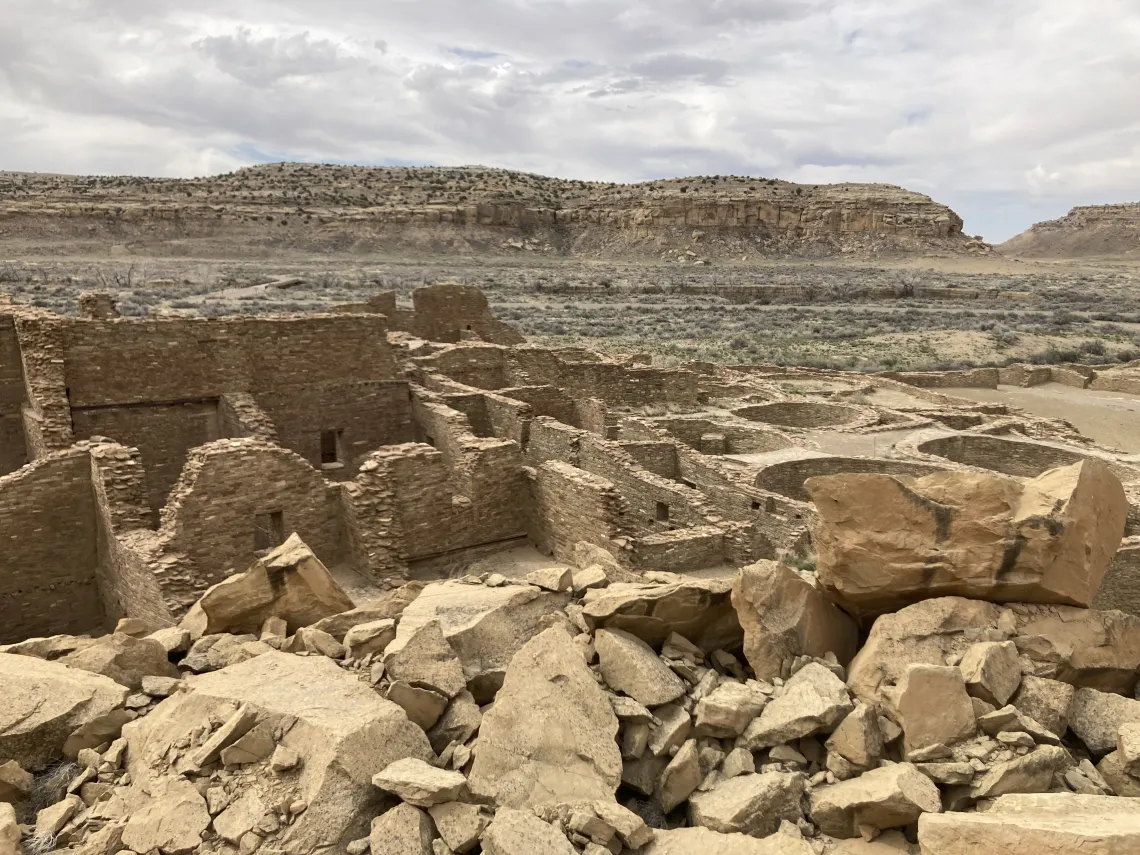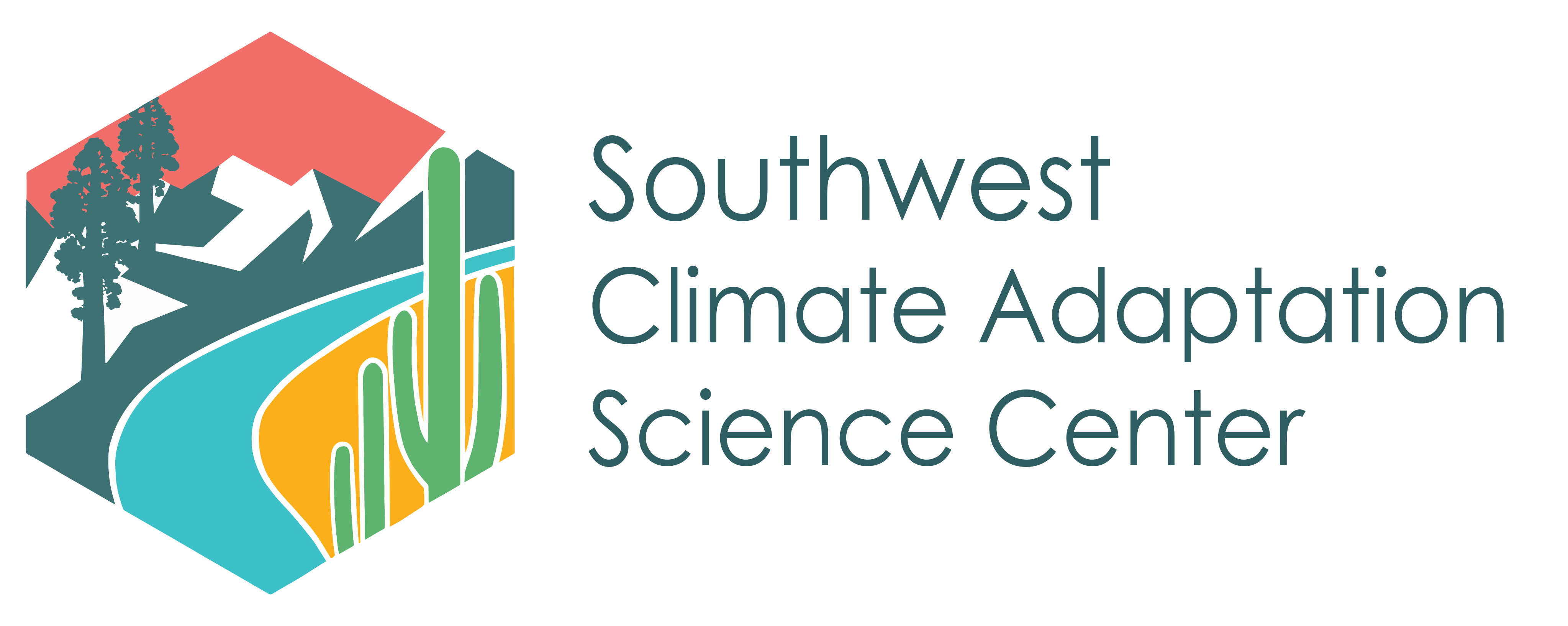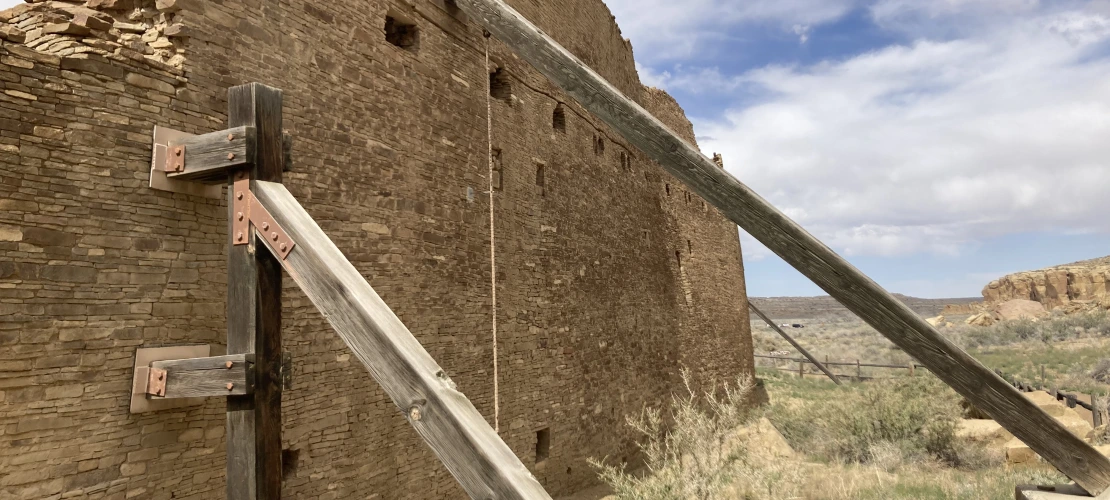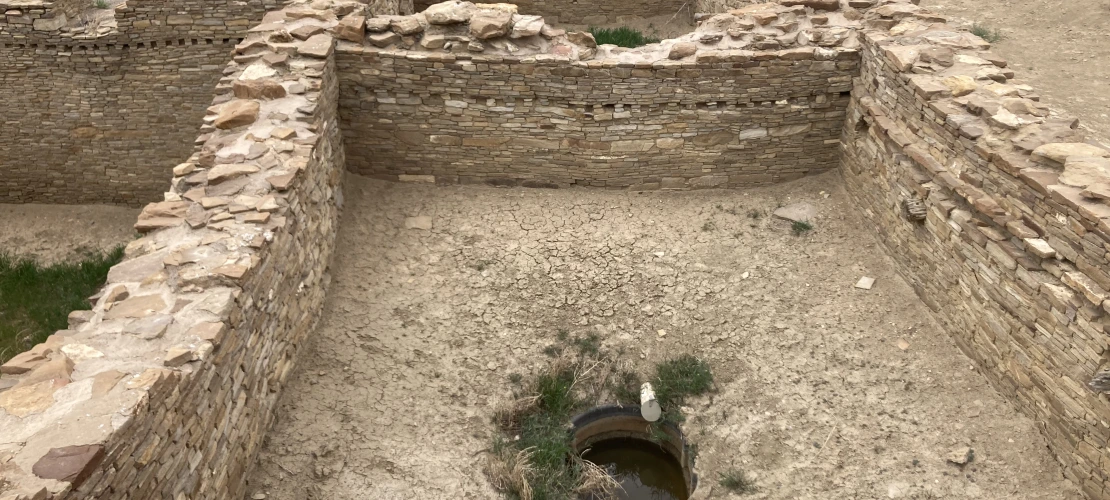Reflections on a Workshop: Developing Strategies to Ensure Ancestral Homes Live into the Future

Rocks from the fall in 1941 in the foreground, with Pueblo Bonito in the background.
How might climate change impact the Great Houses and other ancestral sites of Chaco Culture National Historical Park (CHCU) and Aztec Ruin National Monument (AZRU)? What might National Park Service (NPS) managers do to prepare for these impacts? What are some adaptation strategies they could consider implementing? These are all questions that we addressed in a recent workshop in April in Farmington, New Mexico, which brought together NPS regional and park managers, climate adaptation experts, and Tribal resource managers from Acoma Pueblo, Santa Clara Pueblo, and Tesuque Pueblo.
Before the Farmington workshop, we spent a few hours on Zoom doing pre-work, learning about important sites at these parks that are being impacted by erosion, and the changes in climate that might impact these resources in the future, such as higher temperatures and more extreme precipitation. This prepared us for visiting these amazing resources in person in April. I have visited other parks in the region, like Wupatki National Monument and Bandelier National Monument, and have always been amazed at their massive scale and the ingenuity of the ancestral peoples who built them. I was blown away during our field trip on Day one to CHCU. We walked inside Pueblo Bonito and Pueblo del Arroyo, and ventured further into the desert to explore another Great House. The scale of these ancestral homes is astounding. For example, when it was complete, Pueblo Bonito was 4-stories tall in areas with about 800 rooms–and it was built around 1000 years ago! Just amazing.
Days two and three of the workshop were spent mostly in breakout groups focused on each of the three sites I mentioned above. My group discussed climate impacts and management implications for Pueblo Bonito. In our groups, we brainstormed specific adaptation strategies that managers can implement to mitigate future climate changes. For Pueblo Bonito, the managers in our group focused mostly on strategies to mitigate extreme precipitation and runoff, as they see this as the climate impact that the site is most vulnerable to. Pueblo Bonito has already experienced damage from erosion, when a rockfall in 1941 destroyed some of the structure’s rear wall and some of the rooms. And park managers are currently working to keep water from affecting the structure further, to the best of their ability. We talked about options related to diverting water away from the site, ranging from drainage systems to covering the entire site in a protective dome–all options were on the table, no matter how costly or seemingly impossible. With all options on the table, this also meant that leaving the site completely alone and doing nothing was listed as a possible option, which is something that Tribal managers that were present at the workshop expressed as something that local Pueblos are already doing. We also discussed how important it is to involve local Pueblos in the planning and implementation process, and the NPS managers listed workshops with Tribal members and managers as an important next step. After talking about adaptation options, the next steps were to prioritize and evaluate strategies (this is when the dome idea was moved off of the table). And finally, we discussed what it would actually take to implement the top strategies, such as public buy-in, more personnel, and regular input from nearby Pueblos.
The workshop was a truly engaging experience for me, to be present for some valuable and important conversations around protecting our cultural resources, and to be able to share my knowledge and expertise when applicable. This included sharing CREVAT (Cultural Resources Environmental Vulnerability Assessment Toolbox) with everyone. This is a tool that the University of Arizona developed in close collaboration with National Park Service partners, to assist park managers in assessing the vulnerability of the cultural resources they manage in the Southwest to climate change impacts.
The last thing I’d like to share are a couple of concepts discussed at this meeting that really struck me and have stayed with me as I think about working in this space. First, we discussed the need to think about the site, and even the entire landscape, as a whole system–”fixing” one area can harm another. If we move water to protect one site, is there another site or part of the natural landscape that it will then harm? We can’t think about these as individual sites, but as a cultural landscape. Second, in these reflections I have used the terms “cultural resource” or “site” to refer to these places. However, a Tribal resource manager at the workshop expressed that these places are not “resources,” but are ancestral homes and living entities. This really forced us all to rethink how we talk about and manage these places, and the importance of making sure all voices are at the table and are heard. We all have the same goal: ensuring these ancestral homes and landscapes can “live” even in the face of climate change.



